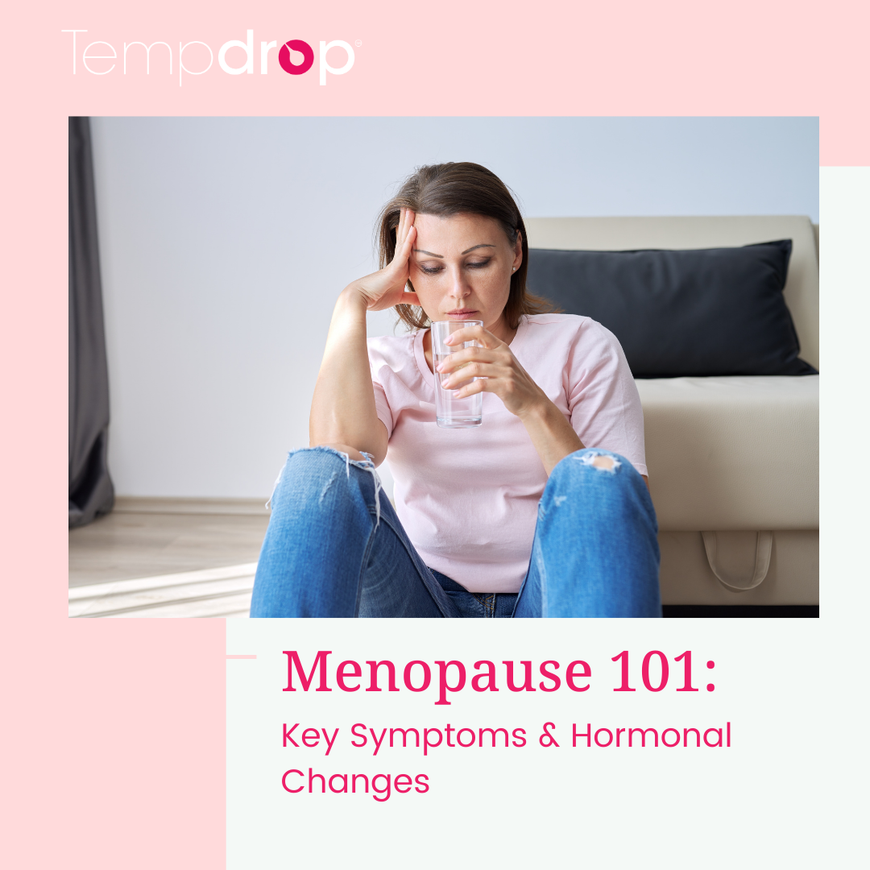Reviewed and approved by Doctor Barak Lilian, intern in Obstetrics and Gynecology, Israel
What is Menopause?
A woman is said to have reached menopause if she has not had a period for 12 months consecutively. The time leading up to this is known as perimenopause. As the name suggests, perimenopause means ‘around menopause’; it refers to the time when your body starts making this natural transition to menopause.
Menopause occurs when the number of remaining ovarian follicles falls below a critical threshold, about 1,000, regardless of the age of a woman. Earlier signs of this reduction can be observed in the time prior to menopause, during perimenopause, where this number is steadily falling.
During perimenopause, progesterone production decreases and estrogen (produced by the ovaries) also slowly dwindles - and eventually stops being made too. It’s important to remember that entering perimenopause is a natural process, and it happens to every woman in the world.

Diagram of estrogen and progesterone production throughout the menstrual cycle.
What are the typical signs that this stage has started?
Typically, when women are in their 40s*, they start to notice some key changes. Note that these changes can also be observed earlier in life**. Here are some initial signs to look out for:
- You may start to notice that your overall menstrual cycle length increases. For example, if you usually have a period every 28 days you may gradually notice the time between periods increasing. Cycles greater than 40 days in length are quite prevalent in the year before menopause.
- You may also experience times without any ovulation events at all (anovulation)‡.
It typically begins in a woman’s late 40s, but it's considered normal to start perimenopause as early as the late 30s or early 40s. It's characterized by a series of cycle changes and symptoms.
Important: While menopause marks the end of your reproductive years, you're still potentially fertile through perimenopause.
How Tempdrop can help you identify the onset of perimenopause
Tracking your cycle can be incredibly valuable as you will be able to monitor your cycle length, ovulation, and luteal phase length.
Often women who chart their menstrual cycles first notice a shorter luteal phase length (time from ovulation to your next period) and lower follicular phase temperatures, both of which can be indicators of perimenopause.
Other easier-to-spot symptoms are:
- Irregular cycles,
- Anovulatory cycles,
- Decreased sex drive.
After going 12 months without a menstrual period, you have officially reached menopause, which also means that perimenopause and your fertile period are over.

When you track your cycle with Tempdrop you will be able to observe the changes happening in your body, such as those mentioned above. You may notice that your follicular phase (time from menstruation to ovulation) is longer. Your luteal phase (time from ovulation to your next period) may also fluctuate during this time.
As you observe these changes, you can consult your healthcare practitioner and ask them about symptoms you may be experiencing such as hot flashes or vaginal dryness. It’s also important to remember that there is still a chance of pregnancy during this time, so consideration of adhering to the rules of your chosen fertility awareness method or using barrier methods during your fertile window is still essential if you are avoiding pregnancy.
How Tempdrop can help you with your symptoms during perimenopause.
Most symptoms are caused by the changing levels of hormones. If you have higher levels of estrogen, you may notice period-like symptoms. On the other hand, if you experience lower levels of estrogen you may experience hot flashes and night sweats.
It’s important to track your symptoms in the Tempdrop app as this will be useful additional information for your practitioner. Your practitioner can then make recommendations based on your Tempdrop data. These recommendations may include nutrition, lifestyle, supplements and even the use of bio-identical hormones.
How can I use the Tempdrop data to help me get accurate hormone testing completed?
It may be that your practitioner shies away from offering hormone testing, for one of a variety of reasons. One reason could be that hormone levels fluctuate throughout the day and vary from cycle day to cycle day so your practitioner may feel that aside from being costly and time consuming, they aren’t particularly accurate. However, when you track your cycle with Tempdrop you can ensure that both estrogen testing# and progesterone testing~ are carried out on the correct days of your cycle and accurate results are obtained.
Since basal body temperature patterns also give you an indication of your hormone levels, tracking with Tempdrop can help you build a data-rich basis to be able to advocate for this testing to be carried out.
If after sharing your cycle data with your practitioner and requesting these tests be carried out, it may be necessary to seek the opinion of another professional.
Going through peri-menopause can be a confusing time to navigate. Still, remember that it’s a natural transition, and having knowledge about your own body and what is happening is key to feeling in control. Why not start tracking your whole cycle to understand your own body?

